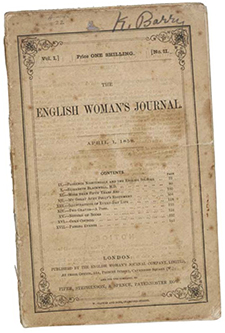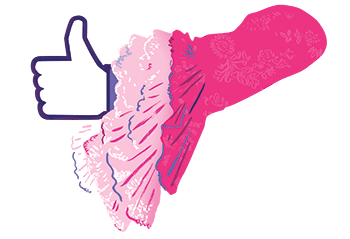
In 1860, Emily Faithfull led a group of women’s-rights activists in founding the Victoria Press. The London-based business published a variety of books, tracts and periodicals, notably the monthly English Woman’s Journal, whose articles advocated for female employment opportunities. And the press itself offered such opportunities, involving women from many walks of life in every part of its process, from writing to editing to typesetting to distribution.
Miranda Marraccini ’12 was in the third year of her Ph.D. program in Princeton University’s English department when she started learning about all of this.
“I realized that the Victoria Press had everything I wanted to write about: feminism, print culture, poetry and periodicals,” Marraccini says. “I also saw that it had the potential to be a great digital project because the women of the Victoria Press were constructing a social network for themselves, and I wanted to recreate that.”

With headlines such as “My Great
Aunt Polly’s Elopement” and “Two
Graves—A Poem,” this monthly
found eye-catching ways to
discuss serious issues.
Starting in 2016, with financial support from Princeton’s Center for Digital Humanities, Marraccini set to work organizing information about the press into spreadsheets, creating visual representations using the program Cytoscape, posting it to the web and presenting at conferences.
Today the project lives at VictoriaPressCircle.org. Visitors can search a database for facts about more than 2,000 contributions to the press, and interact with network graphs that show connections between the contributors.
“There’s also a pretty fun blog, which I wrote while I was entering all of my data and finding weird things in these periodicals,” Marraccini says. One blog entry gives examples from the English Woman’s Journal of the 19th-century equivalent of sensationalistic “clickbait” headlines, including “GLIMPSES INTO A RURAL HOUSE OF BONDAGE,” “A WELL-AUTHENTICATED GHOST STORY” and “WHY BOYS ARE CLEVERER THAN GIRLS” (which turns out to be a sober article “about the poor quality of female education in England,” Marraccini writes). She has also used the blog to grapple with such topics as the racist ways in which the white feminists of the Victoria Press often wrote about people of color, even as they denounced slavery.
“The Victoria Press isn’t very well-known, even among people who study the Victorian period,” she says. “There’s no definitive book about it, which is why I’m writing my dissertation.” She was selected by the Woodrow Wilson National Fellowship Foundation as one of only 10 Dissertation Fellows in Women’s Studies for 2018. Her nearly completed dissertation, Feminist Types: Reading the Victoria Press, draws on results from her digital project.
“My approach to scholarship is rooted in work I started at Amherst,” notes Marraccini, who learned to do archival research as a Folger Fellow and as a student employee in the College’s Archives and Special Collections. Professor Andy Parker advised her to begin using digital methods for her English thesis about the poetry of Thomas Hardy and Elizabeth Barrett Browning.
Now she herself is teaching courses in English. “I’ve incorporated digital work in my teaching,” she says. “Last year I co-taught a class called ‘Virtual Victorians’ with my adviser Meredith Martin.”
Two women working together, taking a modern approach to their field? We can guess that Emily Faithfull would approve.
Marraccini photo: Xinyi Li; Journal photo: Harvard University Library
